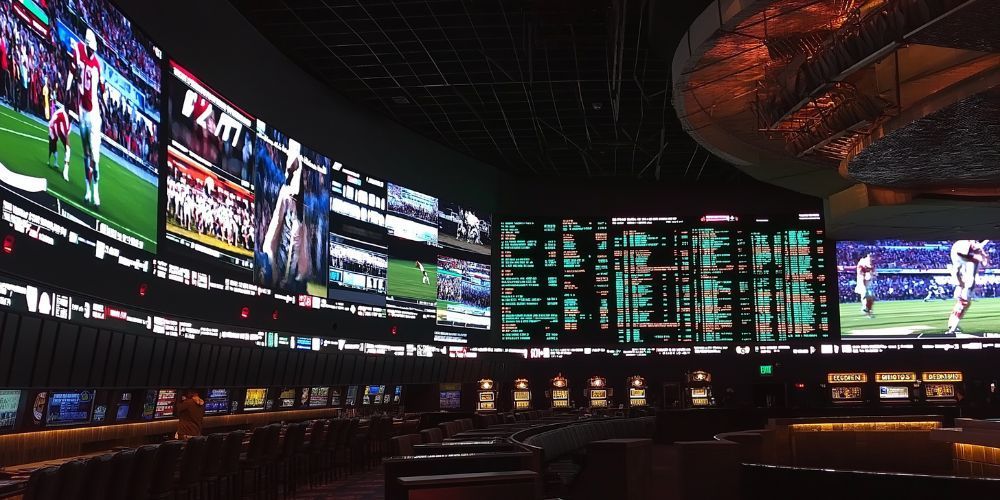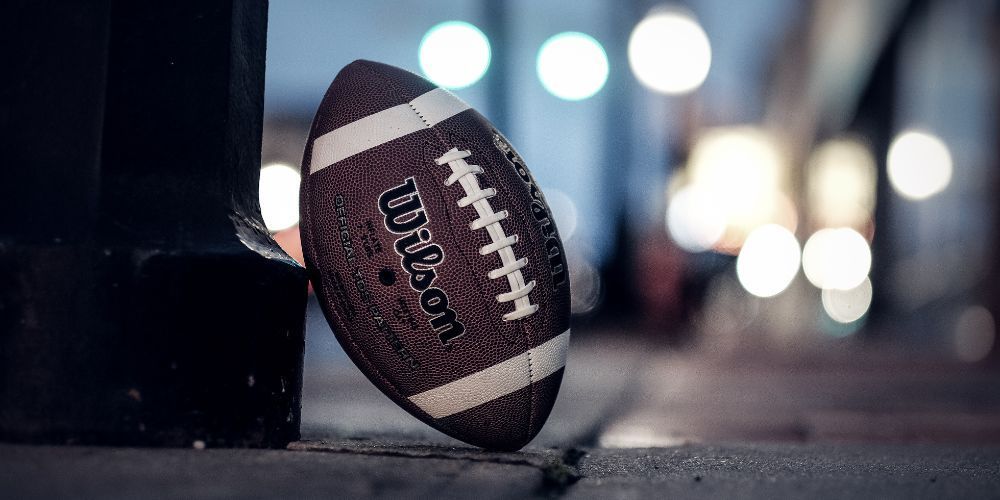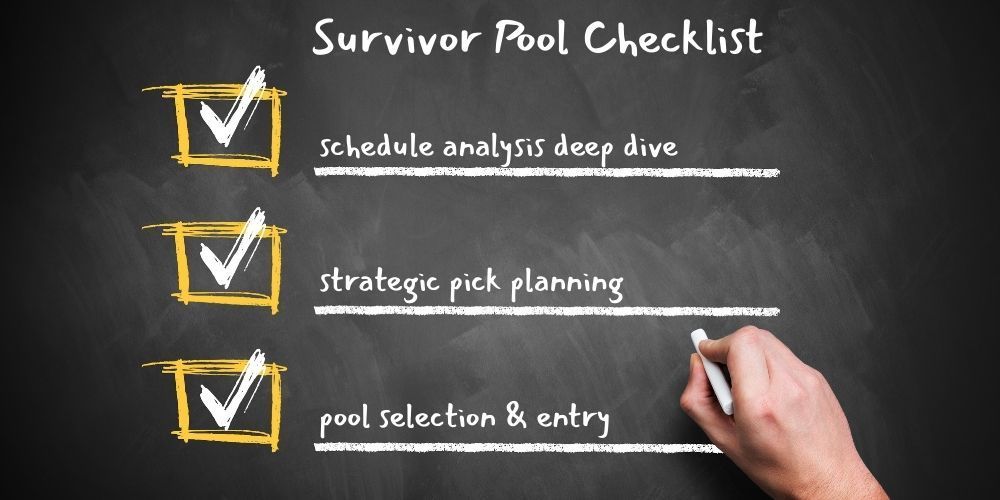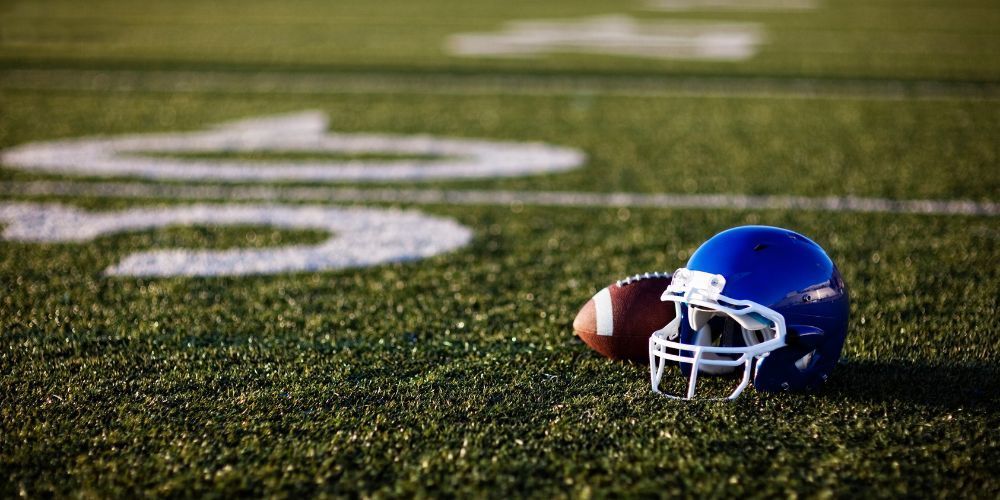How to Use Vegas Odds to Crush Your Survivor Pool
William Flaiz • July 21, 2025
Vegas odds aren't just for gamblers. They're one of the most powerful tools you can use to dominate your survivor pool. While your buddies are picking based on team logos or last week's highlights, you can tap into the collective wisdom of professional oddsmakers who've spent decades analyzing NFL games.
The beauty of Vegas odds is simple: they represent the most accurate prediction of game outcomes available anywhere. Sportsbooks employ teams of experts, advanced analytics, and millions of dollars in research to set these lines. When you learn to read them properly, you're essentially getting access to professional-grade NFL analysis for free.

What Are Vegas Odds and Why Do They Matter?
Vegas odds come in several forms, but for survivor pools, you'll mainly focus on two types: point spreads and over/under totals.
Point spreads tell you which team is favored and by how many points. When you see "Chiefs -7.5 vs. Broncos," it means Kansas City is expected to win by more than 7.5 points. The larger the spread, the more confident Vegas is about the outcome.
Over/under totals show the expected combined score of both teams. A total of 44.5 means Vegas expects the final score to add up to around 44 or 45 points total.
Here's why this matters for your survivor pool: teams that are heavily favored (large point spreads) are statistically more likely to win. It's not a guarantee, but it's the closest thing you'll find to one in the unpredictable world of NFL football.
How to Read Point Spreads for Survivor Success
Reading point spreads is straightforward once you understand the format. The negative number always indicates the favorite, while the positive number shows the underdog.
Examples:
- Cowboys -3.5 vs. Giants +3.5: Dallas is favored by 3.5 points
- Bills -10 vs. Jets +10: Buffalo is a heavy 10-point favorite
- Seahawks -1 vs. 49ers +1: Seattle is barely favored (essentially a coin flip)
For survivor pool purposes, you generally want to focus on teams favored by at least 3-4 points. Games with spreads smaller than 3 points are considered "pick 'em" games where either team could easily win.
The sweet spot for survivor picks often falls between 4-point and 10-point favorites. These teams are expected to win clearly, but aren't so heavily favored that everyone else in your pool will pick them too.
Using Over/Under Totals to Your Advantage
Over/under totals reveal game flow expectations and can help you identify potential trap games. Low totals (under 42 points) often indicate weather concerns, strong defenses, or conservative game plans that could lead to unpredictable outcomes.
High totals (over 50 points) suggest shootouts where the better offense typically prevails. These games can actually be safer for survivor purposes because talent usually wins in high-scoring affairs.
Red flags from totals:
- Extremely low totals (under 40) in bad weather
- Totals that seem too high for the teams involved
- Dramatic line movement from opening to game day
Finding Value in Line Movement
Vegas odds aren't static. They move based on betting action, injury news, weather forecasts, and other factors. Smart survivor pool players track these movements to identify value.
What to watch for:
- Sharp money movement: When spreads move despite most public bets going the other way, professional bettors likely know something
- Injury-related shifts: Key player injuries can cause dramatic line movement
- Weather adjustments: Outdoor games with wind or precipitation often see totals drop significantly
If you see a spread move from -6 to -3 without obvious news, that's worth investigating. Something caused smart money to back the underdog.

The "Vegas Test" for Your Weekly Pick
Before finalizing any survivor pick, run it through this simple Vegas test:
- Is your team favored by at least 4 points? If not, consider other options
- Has the line moved in your team's favor? Positive line movement suggests sharp money agreement
- Is the total reasonable for game conditions? Extreme totals can signal unpredictable games
- Are you getting good survivor pool value? Don't waste a heavy favorite on a week where a smaller favorite would suffice
This framework won't guarantee wins, but it will help you make more informed decisions than gut feelings or team loyalty.
Practical Examples: Vegas Odds in Action
Scenario 1: Week 3, 2024 The Bills opened as 7-point favorites over Miami. By game day, the line moved to Bills -3.5. Despite Buffalo being the "obvious" pick, sharp bettors were backing Miami. The Dolphins won outright, eliminating many survivor pool players who ignored the line movement.
Scenario 2: Week 8, 2024 Detroit was favored by just 2.5 points over Green Bay in a divisional game with a 48.5 total. The small spread and high total suggested a coin-flip game that could go either way. Smart survivor players saved the Lions for a better spot later in the season.
Scenario 3: Week 12, 2024 San Francisco opened as 9-point home favorites against Seattle with a 42.5 total. The large spread indicated clear talent disparity, while the reasonable total suggested normal game conditions. This was an ideal survivor pool spot for the 49ers.
Advanced Vegas Strategies for Late-Season Success
As your survivor pool gets deeper, Vegas odds become even more critical. Late in the season, you'll often face choices between multiple solid favorites. Here's how to use odds to break ties:
- Compare implied win probabilities: A -7 favorite has roughly a 74% implied win probability, while a -10 favorite sits around 82%. Those eight percentage points matter in elimination formats.
- Look for line shopping opportunities: Different sportsbooks may have slightly different lines. If most books have Team A at -6 but one has them at -7.5, that suggests the true line is probably closer to -7.5.
- Factor in division game adjustments: Vegas typically shades lines toward underdogs in division games because familiarity breeds chaos. A -6 favorite against a division rival might actually be closer to -3 in terms of true probability.
Common Vegas Odds Mistakes to Avoid
Many survivor pool players misinterpret Vegas information. Here are the biggest traps to avoid:
- Chasing huge favorites: Teams favored by 14+ points seem safe but often deliver stress-inducing wins. Save these massive favorites for desperate situations only.
- Ignoring line movement: If a line moves against your preferred pick, pay attention. The market rarely moves without reason.
- Overvaluing home favorites: Home field advantage is already baked into Vegas lines. Don't give extra credit just because a team is playing at home.
- Confusing public perception with Vegas reality: Popular teams often have inflated public betting percentages but accurate Vegas lines. Trust the numbers, not the narrative.
Building Your Weekly Vegas Research Routine
Successful survivor pool players develop consistent research habits around Vegas odds:
- Tuesday-Wednesday: Check opening lines and identify early value
- Thursday-Friday: Track line movements and injury news
- Saturday-Sunday morning: Final line review and weather check
This routine helps you spot trends and avoid reactive picks based on the latest headlines.
Vegas odds aren't perfect, but they're the most accurate game predictions you'll find anywhere. When you learn to read them properly and incorporate them into your survivor pool strategy, you gain a significant edge over players who rely on hunches or team preferences.
Remember, survivor pools aren't about picking the best teams – they're about picking teams most likely to win each specific week. Vegas odds give you that weekly probability better than any other source.
How accurate are Vegas point spreads for predicting NFL game winners?
Vegas point spreads are remarkably accurate at predicting game outcomes. Studies show that favorites cover the spread approximately 50% of the time (by design), but favorites win straight up about 67-70% of the time. For survivor pool purposes, this means that teams favored by 3+ points win roughly 70% of their games, while teams favored by 7+ points win about 75-80% of the time. The accuracy increases with larger spreads, which is why heavily favored teams (10+ point favorites) win outright approximately 85% of the time. However, remember that Vegas lines are designed to split betting action, not necessarily predict exact outcomes, so they're optimized for accuracy across all games rather than individual contests.
Should I always pick the biggest favorite according to Vegas odds in my survivor pool?
Not necessarily. While bigger favorites have higher win probabilities, survivor pool strategy involves resource management across an entire season. Picking the biggest favorite every week means you'll burn through your best options early and be left with riskier choices later when the pool has fewer participants. The optimal strategy is to pick favorites large enough to give you a strong chance of winning (typically 4+ point favorites) while saving your premium options (10+ point favorites) for later weeks when you have fewer alternatives. Also consider that the biggest favorites are often the most popular picks among other participants, so you might not gain much separation even if they win.
How should I interpret it when Vegas odds move significantly from opening to game time?
Significant line movement usually indicates that new information has entered the market, and it's worth paying close attention to these changes. When spreads move 2+ points, it's typically due to injury news, weather developments, or sharp professional bettors taking strong positions. If a line moves in favor of your preferred pick (making them bigger favorites), that's generally positive confirmation. If it moves against them, investigate why – you might discover injury concerns or other factors that make them riskier than originally thought. Reverse line movement is particularly noteworthy: if most of the public is betting one way but the line moves in the opposite direction, it suggests professional money is taking the contrarian side, which historically tends to be more accurate than public perception.











